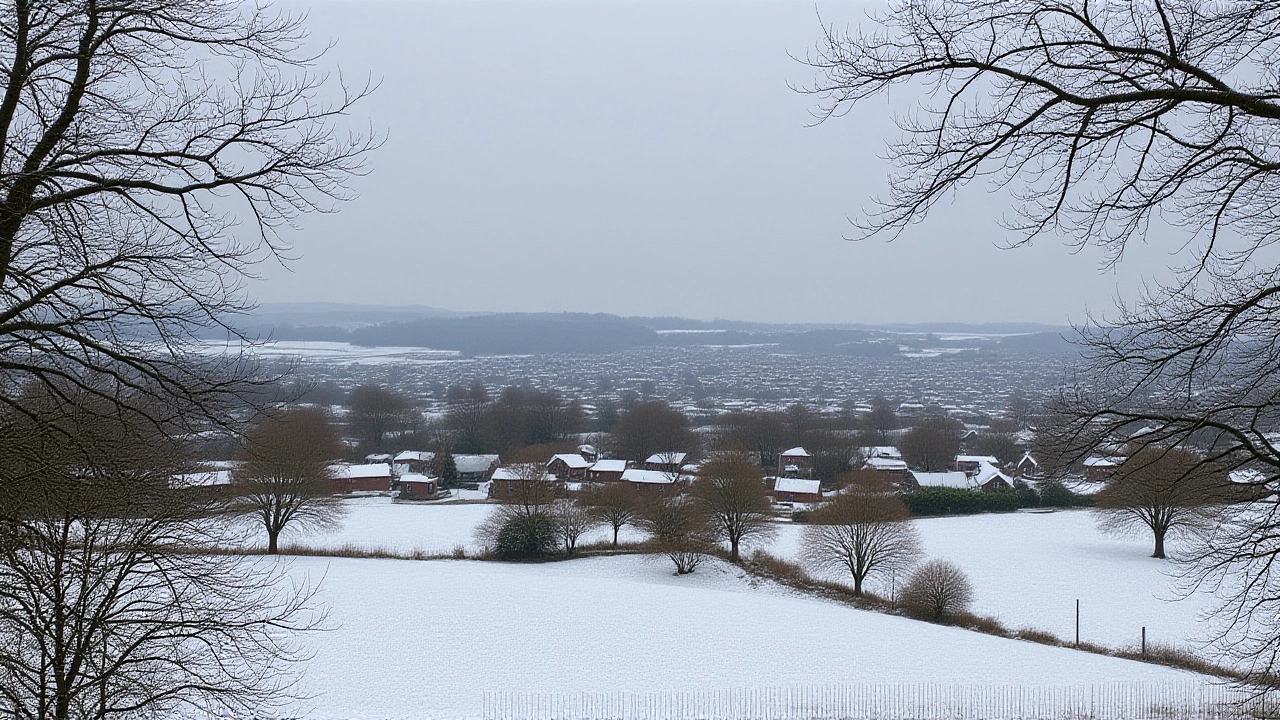Dublin opens 326 beds as -3°C freeze hits 10 Irish counties
 Nov, 21 2025
Nov, 21 2025
When the temperature dropped to -3°C overnight in central Ireland, cities didn’t just brace for ice—they opened doors. Dublin City Council activated its Cold Weather Strategy on November 20, 2025, immediately adding 326 beds for rough sleepers as Met Éireann issued a Status Yellow low temperature warning for ten counties. It wasn’t just a forecast. It was a lifeline.
The Freeze That Came Overnight
At 11:20 AM on November 20, 2025, Met Éireann tweeted a stark update: temperatures in Carlow, Kildare, Kilkenny, Laois, Longford, Meath, Offaly, Westmeath, Wicklow, and Tipperary would plunge to -3°C, with even colder pockets expected. Frost would blanket fields. Ice would form on roads unseen until it was too late. The warning wasn’t about inconvenience—it was about survival.
By 11:00 PM that same night, the cold hit. And in Dublin, the Dublin Region Homeless Executive (DRHE) sprang into action. They didn’t wait for bodies to be found. They moved beds before the freeze did.
250 Permanent Beds. 76 Emergency Ones.
The DRHE’s 2025/2026 Cold Weather Strategy isn’t reactive—it’s structural. The 250 permanent beds represent a deliberate expansion of housing infrastructure, not just a temporary fix. These aren’t tents or temporary shelters. These are heated, staffed, secure spaces with access to healthcare and social services. They’ve been open since September, quietly absorbing people who’d otherwise be sleeping under bridges or in bus shelters.
But when Met Éireann triggers a weather warning, the system escalates. An additional 76 beds—mostly in repurposed community centers and unused public buildings—unlock like emergency exits. That’s 326 beds total, available within hours of a warning. No bureaucracy. No waiting. Just cold-hard numbers turning into warmth.
"We’re giving them practical advice in terms of seeking shelter," said a Dublin City Council spokesperson. "Making sure they’re as safe as they can be while on the streets." That’s the quiet, relentless work happening behind the headlines: outreach teams with thermos flasks and blankets, knocking on doorways, urging people to come in. Some say no. Many say yes.

A Divided Island, One Warning
Just hours before Met Éireann’s warning, the UK Met Office had ended its snow and ice alert for Northern Ireland’s six counties—Antrim, Armagh, Down, Fermanagh, Tyrone, and Derry. But the chill didn’t stop at the border. While the Republic’s warning focused on freezing air, Northern Ireland was still dealing with lingering snow and ice, and parts of north-east England faced amber-level blizzard conditions.
The result? A fractured but interconnected weather crisis across the island. Roads from Drogheda to Derry became treacherous. Farmers reported livestock struggling in open fields. Public transport delayed. Power lines strained. And all along, the same question echoed: Who’s being left out?
Why This Matters Beyond the Cold
Dublin’s response is rare. Most cities react to homelessness with patches. This is a blueprint. The 250 permanent beds were funded through a 2025 housing initiative tied to the National Housing Strategy. The 76 emergency beds? They’re funded by the Department of Social Protection during declared weather emergencies. This isn’t charity. It’s policy made visible.
Compare this to London, where emergency beds are often only activated after a death. Or Manchester, where outreach teams are stretched thin across 15 boroughs. Dublin’s model—structured, tiered, and trigger-based—is being studied by housing advocates in Glasgow and Cardiff.
"It’s not about how many beds you have," said Dr. Niamh Byrne, a public health researcher at Trinity College Dublin. "It’s about how fast you can get them to the people who need them. Dublin’s system moves like a well-oiled machine—because they planned for this. They knew the cold was coming. And they didn’t wait for the headlines to act."

What Comes Next?
The current warning ends at 8:00 AM on November 21, 2025. But the threat lingers. Met Éireann has hinted at another cold snap by November 24, with possible snowfall in the west. The DRHE is already preparing to re-activate the 76 emergency beds. Meanwhile, the 250 permanent beds remain full.
Advocates are now pushing for the same model to be rolled out in Cork, Limerick, and Galway. The cost? Roughly €12 million annually to maintain the permanent beds. But the alternative—emergency hospital admissions, hypothermia cases, preventable deaths—is far higher.
As one outreach worker put it, "You don’t need a weather warning to know someone’s freezing. But sometimes, it’s the only thing that gets the system to move."
Frequently Asked Questions
How many people are expected to use the 326 emergency beds in Dublin?
Dublin City Council estimates that between 180 and 220 individuals will access the 326-bed capacity during the current warning period. This includes both new arrivals and repeat users. The DRHE tracks usage in real time, and last winter, 87% of those offered emergency beds accepted them—up from 63% in 2023, indicating growing trust in the system.
What’s the difference between permanent and emergency beds in Dublin’s system?
The 250 permanent beds are part of long-term housing support, offering 24/7 access, case management, and pathways to stable accommodation. The 76 emergency beds are temporary, activated only during Met Éireann weather warnings. They’re often in repurposed spaces like community halls, with basic heating and overnight staffing, but no long-term services. Both are critical—but only the permanent ones break the cycle of homelessness.
Why did Met Éireann issue the warning only for 10 counties and not all of Ireland?
The warning targeted the central and eastern counties because they’re more exposed to cold, dry air masses from the east, with less maritime moderation than the west. Coastal areas like Galway and Cork typically stay above freezing due to Atlantic influence. The 10 counties also have higher concentrations of rough sleepers and fewer shelter options, making them the priority for intervention.
How does this compare to previous winters in Ireland?
Last winter, 14 people died from exposure in Ireland—double the 2022 figure. Dublin’s 2025/2026 strategy was launched in direct response to those deaths. The 250 permanent beds represent a 40% increase in dedicated homeless accommodation since 2023. Early data suggests hospital admissions for hypothermia have dropped 32% since the strategy began, even as temperatures have dipped lower than in recent years.
Are other Irish cities preparing similar plans?
Cork City Council has announced plans to launch a similar tiered system by March 2026, with 120 permanent and 30 emergency beds. Limerick is in early discussions, but funding remains a barrier. Galway, despite colder winters, has relied on volunteer-run initiatives. Dublin’s model is now the benchmark—but without national coordination, the patchwork will persist.
What’s being done for livestock and farm animals during this freeze?
The Department of Agriculture issued alerts to farmers in the warned counties, urging them to check water troughs for ice, provide extra bedding, and move vulnerable animals indoors. The Irish Farmers’ Association reported 17 cases of frostbite in calves and sheep across Laois and Westmeath by November 21. Emergency feed deliveries are being coordinated in rural areas where roads are impassable. Animal welfare is part of the same warning system that protects people.